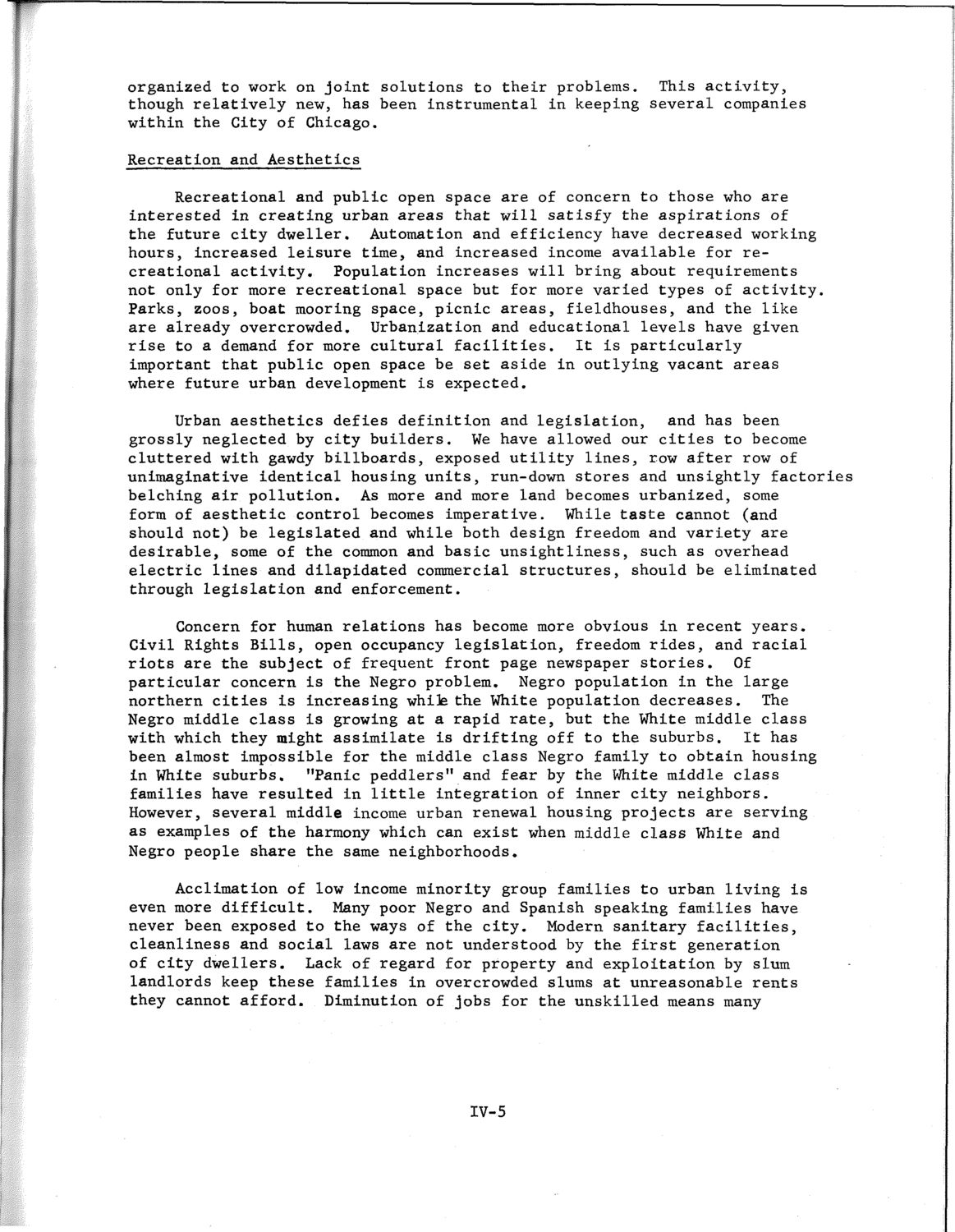| |
| |
Caption: SWE - Proceedings of the First International Conference of Women Engineers and Scientists
This is a reduced-resolution page image for fast online browsing.

EXTRACTED TEXT FROM PAGE:
organized to work on joint solutions to their problems. This activity, though relatively new, has been instrumental in keeping several companies within the City of Chicago. Recreation and Aesthetics Recreational and public open space are of concern to those who are interested in creating urban areas that will satisfy the aspirations of the future city dweller. Automation and efficiency have decreased working hours, increased leisure time, and increased income available for recreational activity. Population increases will bring about requirements not only for more recreational space but for more varied types of activity. Parks, zoos, boat mooring space, picnic areas, fieldhouses, and the like are already overcrowded. Urbanization and educational levels have given rise to a demand for more cultural facilities. It is particularly important that public open space be set aside in outlying vacant areas where future urban development is expected. Urban aesthetics defies definition and legislation, and has been grossly neglected by city builders. We have allowed our cities to become cluttered with gawdy billboards, exposed utility lines, row after row of unimaginative identical housing units, run-down stores and unsightly factories belching air pollution. As more and more land becomes urbanized, some form of aesthetic control becomes imperative. While taste cannot (and should not) be legislated and while both design freedom and variety are desirable, some of the common and basic unsightliness, such as overhead electric lines and dilapidated commercial structures, should be eliminated through legislation and enforcement. Concern for human relations has become more obvious in recent years. Civil Rights Bills, open occupancy legislation, freedom rides, and racial riots are the subject of frequent front page newspaper stories. Of particular concern is the Negro problem. Negro population in the large northern cities is increasing while the White population decreases. The Negro middle class is growing at a rapid rate, but the White middle class with which they might assimilate is drifting off to the suburbs. It has been almost impossible for the middle class Negro family to obtain housing in White suburbs. "Panic peddlers" and fear by the White middle class families have resulted in little integration of inner city neighbors. However, several middle income urban renewal housing projects are serving as examples of the harmony which can exist when middle class White and Negro people share the same neighborhoods. Acclimation of low income minority group families to urban living is even more difficult. Many poor Negro and Spanish speaking families have never been exposed to the ways of the city. Modern sanitary facilities, cleanliness and social laws are not understood by the first generation of city dwellers. Lack of regard for property and exploitation by slum landlords keep these families in overcrowded slums at unreasonable rents they cannot afford. Diminution of jobs for the unskilled means many IV-5
| |